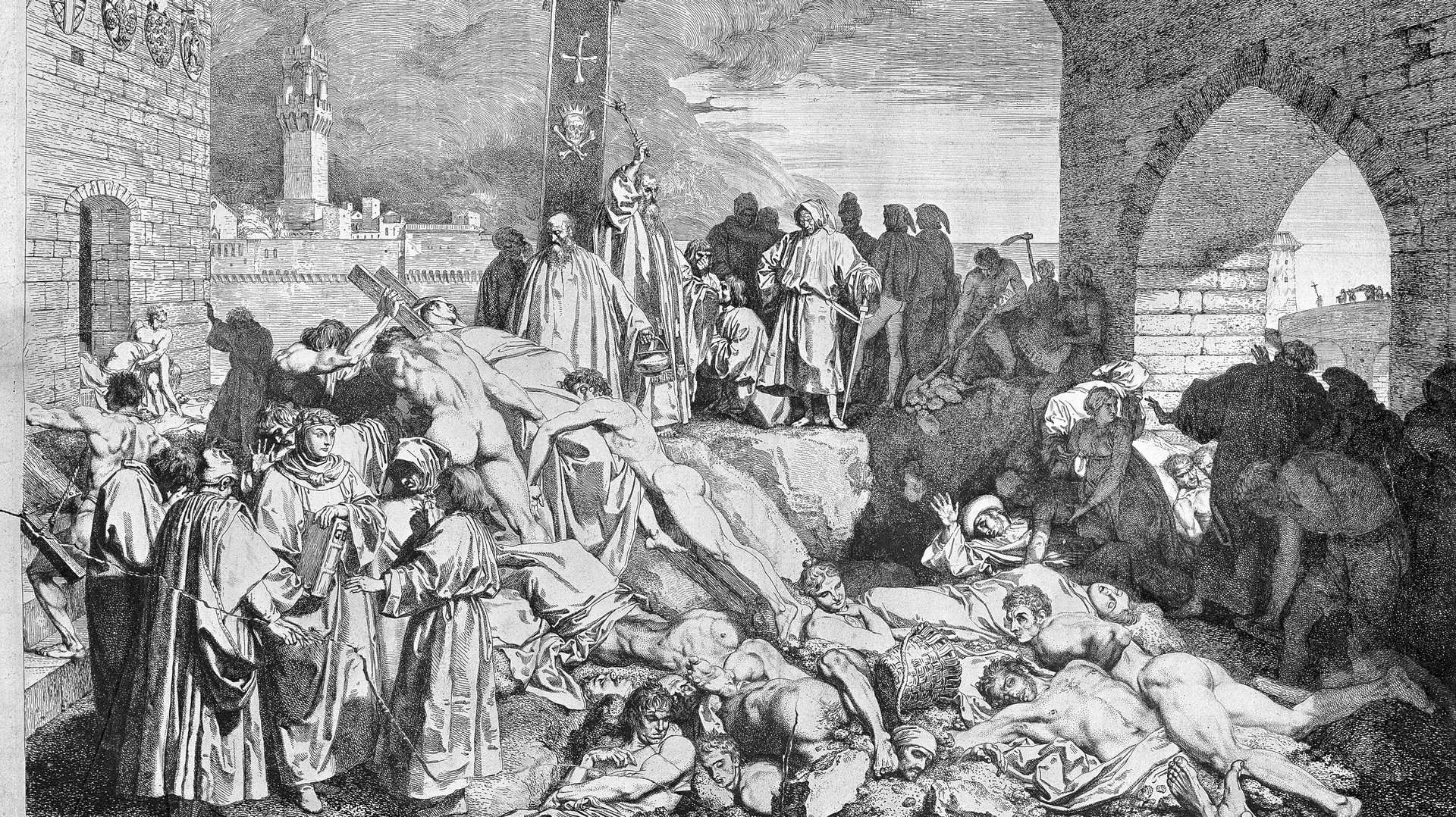What we’ve learned from past pandemics
Last Wednesday, the World Health Organization labelled the novel coronavirus a pandemic, after it became clear that Covid-19 was spreading freely across most of the world. But history is no stranger to global disease outbreaks, each of which has taught us something about how to manage their spread. Whether we’re following those lessons today is a different story.


Last Wednesday, the World Health Organization labelled the novel coronavirus a pandemic, after it became clear that Covid-19 was spreading freely across most of the world. But history is no stranger to global disease outbreaks, each of which has taught us something about how to manage their spread. Whether we’re following those lessons today is a different story.
“There are many examples where the lessons of the past are ignored,” says Graham Mooney, a historian of medicine at Johns Hopkins. One example: Governments have often failed to anticipate and support citizens through the social and economic impacts of pandemics, from mandatory quarantines and travel restrictions to closing schools, workplaces, and local businesses. “These crises expose social inequality,” he said.
Still, we’re definitely better off than the Roman legionnaires, who were among the first to suffer from a rapidly spreading, deadly disease. Here’s a bit of what public health experts and epidemiologists have learned from pandemics past:
Antonine Plague, ~165-180 and ~250 AD
One of the world’s first epidemics, a form of smallpox or measles, was first brought to Rome by legionnaires returning from a siege in modern-day Iraq (it had a resurgence almost a hundred years later). At its peak, the disease may have killed up to 2,000 people per day—it devastated the Roman army, fueled the growing popularity of Christianity, and was an early contributor to the Empire’s eventual collapse. It also offered an early glimpse at a key tenet of virology: Disease outbreaks are deadliest when introduced to a population for the first time, when people lack immunity.
The Black Death, 1347-1351
Genoese traders brought plague to Europe after escaping a siege in which a Mongol general used infected corpses as a weapon. In a few short years, up to 25 million people, one-third of Europe’s population, were killed. Lesser outbreaks, spread by fleas, continued to pop up for centuries, and produced some victories for working from home: Shakespeare used a shutdown of theaters in 1590 to write poetry, and during an outbreak in 1665, Cambridge sent its students home—including Sir Isaac Newton, who used the opportunity to sit near an apple tree and unlock a fundamental law of physics. What have you accomplished this week?
First influenza pandemic, 1580
Although the earliest cases of influenza may have occurred among Greek soldiers fighting the Peloponnesian War back in 430 BC, the first true flu pandemic appeared in the summer of 1580 in Asia, and quickly spread over trade routes into Europe and North America. The full death toll is unknown, but at least 8,000 deaths were reported in Rome alone. This period saw the emergence in Europe of early quarantine measures and border checkpoints. The first reference to “influenza” in scientific literature dates to 1650, and derives from the Italian word for “influence”—possibly the influence of misaligned stars.
Cholera pandemics, 1800s
Throughout the nineteenth century, there were at least six distinct, widespread outbreaks of cholera. All started in the Bay of Bengal region of India, and took tens of thousands of lives as they spread along colonial trade routes. Misinformation, plus resentment over economic inequality, exacerbated the threat and led to a wave of conspiracy theories that cholera was being spread intentionally to thin out the ranks of the poor. In the UK and Russia, rioters took aim at hospitals. But researchers developed key insights on contact tracing—one London outbreak was traced to a contaminated water pump (the handle, which a heroic Dr. John Snow removed to stop people from using the pump, is now on display at the city’s Institute of Tropical Disease).
Spanish flu, 1918
Likely the worst medical disaster in history, the 1918 flu infected up to one-third of the global population and killed up to 50 million people. The pandemic revealed just how many lives can be saved by social distancing: Cities that cancelled public events had far fewer cases. Just as the outbreak was unfolding, Philadelphia threw a parade with 200,000 people marching in support of the World War I effort; by the end of the week, 4,500 people were dead from the flu. Meanwhile, St. Louis shuttered public buildings and curtailed transit; the flu death rate there was half of Philadelphia’s.
Mid-century flu pandemics, 1957 and 1968
By mid-century, the world was an even more explosive environment for pandemics than it was in 1918, with nearly twice the global population and much more global commerce and air travel. But there were also important advances in immunology and diplomacy: The flu vaccine had been developed in the 1930s and ’40s, and most of the public health agencies we recognize today, including the CDC and WHO, were established in the ’40s. Still, two separate flu pandemics—both derived from avian flu and originating in Hong Kong and mainland China—killed more than one million people each.
HIV/AIDS, 1970s-present
Since the 1970s, 75 million people have been infected with HIV, and up to 32 million have died. Although the pandemic led to critical medical advances in antiretroviral drugs, and public health programs like needle exchanges and the widespread use of condoms, it also held many lessons about the deadly danger of social stigma.